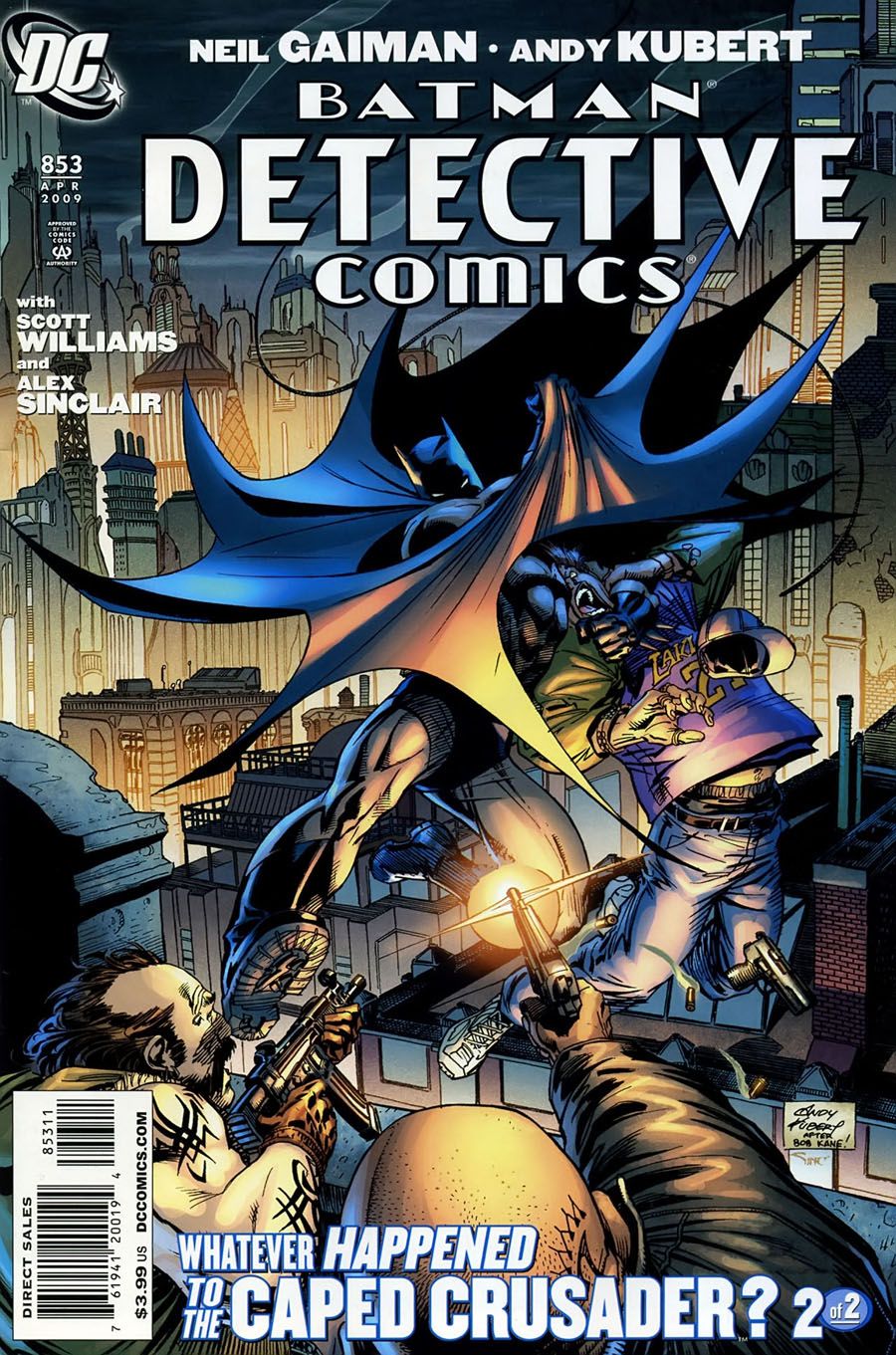When "Crisis on Infinite Earths," rolled around, DC Comics decided to restart the character of Superman, and Alan Moore got to write "Whatever Happened to the Man of Tomorrow?" as an epilogue to the original, pre-Crisis Superman. It's a fantastic story, in no small part because it's Alan Moore, of course. But because it was the end of the line for the character, Moore had a fantastic level of freedom attached to the process. He got to end things for him, bring everything to a conclusion, and move on.
It's because of that, I can't help but think that agreeing to write "Whatever Happened to the Caped Crusader?" is what I'd call a sucker's bet. No matter what you do, on some level you're bound to lose. Unlike Moore's final Superman story, it's not really the end of the line for Batman. Everyone knows that it's just a matter of time until the character returns; it's a given at this point in the game. So Neil Gaiman doesn't get the same sort of freedom that Moore had; while I don't think he'd even want to go the exact same route of Moore, a lot of avenues and possibilities were closed off to him right from the beginning. And so, Gaiman's ended up with the impossible task of trying to please expectations that would be unnaturally high, because the title harkens back to something that this story simply cannot be as a matter of practicality.
"Detective Comics" #853 is the conclusion of his and Andy Kubert's "Whatever Happened to the Caped Crusader?" and it's not a bad issue by any stretch of the imagination. I do think, however, that it's safe to say that Gaiman ends up going with a slightly more dream-like conclusion (no pun intended) than readers might have expected. This issue pretty quickly deviates off the path of the first installment, but that's a good thing; by this point it's safe to say that readers are understanding the idea behind the multiple viewpoints of Batman from his rogue's gallery and allies alike, even as how the same message is still behind each story. It's a nice nod to a character that has had numerous interpretations over the years in both comics and other forms of media, even as the basic tenants have (mostly) followed through with the character from one incarnation to the next.
From there, Gaiman has to wrap things up, and while the identity of the mysterious voice from the first half isn't a bad one, it's unfortunately an overused trope that gets attached to the Batman character far too often. But given the tight constraints of the story itself, it's not a misstep, but almost rather one of the few paths still available. This all leads to a quiet conclusion for the story, and there's even a nod to both the circular nature of the comics and that everything will continue before too long. Gaiman is treating this not as the end of Batman, but rather a momentary pause in the grand scheme of things, a brief rest stop. It's a nice interpretation of both the character and also the comics industry in general.
Kubert's art for "Detective" #853 isn't quite as sharp as the first half, but he also got a lot more places to stretch his artistic wings in the previous issue. There's less channeling of previous Batman artists here, perhaps because their creations aren't on the page nearly as much as before. The bits he does work in are mostly on track, though, with old school designs for characters like Robin and the Bette Kane Batgirl. Only Superman himself seems slightly off, a little too dark and grim-faced for what one would expect to be modeled more in the vein of Curt Swan or even Joe Shuster. There are some beautiful moments in the comic; Gotham rising up out of the water like a medieval walled city, the Batman-shaped panel frames, the classic look and style of the mysterious woman as she's finally revealed to both Batman and the reader. Scott Williams's inks certainly bring back a bit of the same flavor he added to Jim Lee's pencils in "Batman: Hush" even while letting Kubert's pencils still look recognizable.
The one thing that Moore's story ultimately brought to the table that I felt was missing here, though, was a sense of wonder. Reading the conclusion to Gaiman's story, I felt satisfied, and pleased. (In some ways it could almost have served for the epilogue to the pre-Crisis Batman back in 1986.) Reading Moore's story, though, makes me want to sit down and re-read it right away. It's an unfair comparison between the two, I know that, and I think with time that extra hope for a little more will go away. Until then, I think that while "Whatever Happened to the Caped Crusader?" might not be a story for the ages, it is a strong, satisfying comic. And that's definitely something to be proud of.

